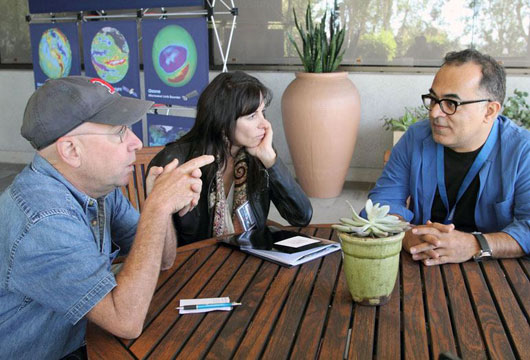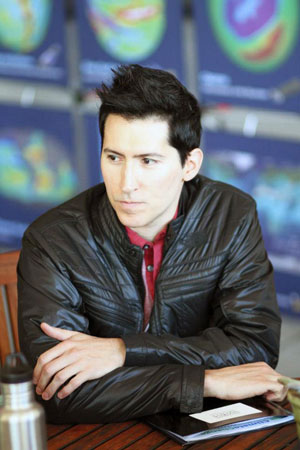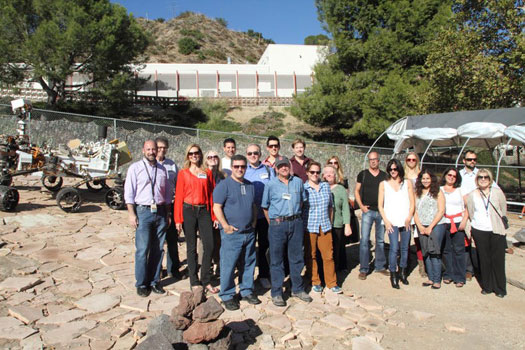Ask NASA Climate | November 27, 2012, 14:57 PST
Finding the plot
Real-life climate stories
Climate change makes headlines, but not so much box office or TV hits. In an effort to inject more realistic climate-related story arcs into the silver screen, NASA climate experts and Hollywood entertainment writers and producers came together last month to chat. A bus of writers and producers (from TV series such as Grimm and Curious George) dropped in on NASA’s Jet Propulsion Laboratory to hear about topics ranging from the impact of global warming on the Amazon rainforest to potentially new sources of sustainable energy involving microbes living inside termites. And in an “Entertaining Climate Change” event held in Los Angeles, producers, writers, filmmakers and artists came to listen to Dr. Jim Hansen, one of NASA’s best-known climatologists, talk about how real people are being affected by climate change now. They also learned how NASA’s suite of satellites monitors climate change around the planet and how we visualize that information.


The tour was organized by Hollywood, Health and Society (HH&S), a program of the University of Southern California’s Annenberg School for Communication and Journalism based in Los Angeles. The tour was part of a new collaboration between climate.nasa.gov and the Annenberg School. HH&S hooks up entertainment industry professionals with accurate, timely information that can be used in health- and climate-related plotlines — information that is unusual, compelling and dramatic, but based on real stories about real people and places. Global instability, infectious diseases and drought are all examples of real-life storylines that are linked to climate change and that could make for thought-provoking entertainment.

At present, TV storylines about climate change are “close to zero”, explained HH&S Director Sandra de Castro Buffington. An HH&S TV monitoring project earlier this year looked at more than 3,000 storylines used in the top 28 scripted TV shows, and found that only 24 of them — less than one percent — dealt with climate change, and most of them only peripherally.
This effort is trying to change that. While you may not see “CSI Climate”, “Attack of the Frankenstorms” or “Extreme Weather Makeover” anytime soon, hopefully TV programs and movies will soon begin to reflect the reality of climate change.
